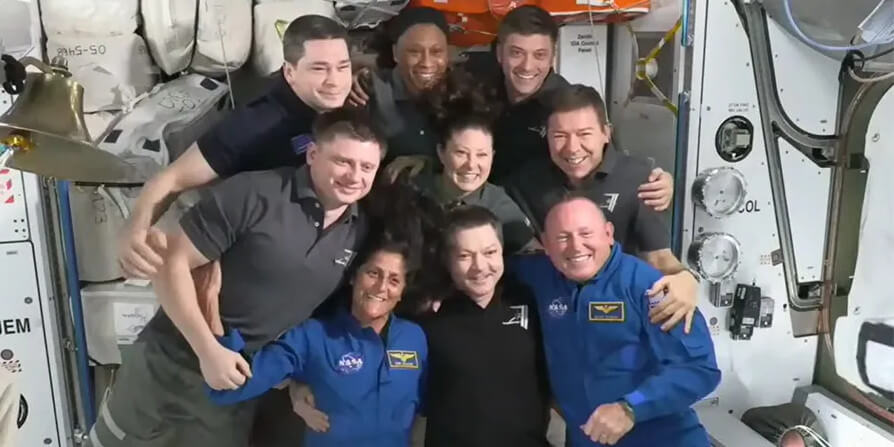The Starliner spacecraft with two astronauts on board arrived at the ISS a day after launch

NASA astronauts Butch Wilmore and Suni Williams aboard the Boeing Starliner spacecraft successfully arrived at the International Space Station (ISS) approximately 26 hours after launching from Cape Canaveral Space Force Station. The astronauts observed Starliner as it autonomously performed a series of maneuvers to smoothly bring the spacecraft closer to the orbiting laboratory before docking.
During the flight, Wilmore and Williams successfully demonstrated manual piloting of the Starliner and completed the sleep period. However, before the crew fell asleep, Mission teams discovered three helium leaks on the spacecraft. One of these was previously discussed before the flight along with the control plan, and the other two occurred as the spacecraft entered orbit.
To monitor and correct these leaks, all three helium manifolds were closed in-flight during the crew’s sleep period and reopened prior to rendezvous and docking operations. After docking, all Starliner manifolds are closed according to the standard plan.
Engine failure
When Starliner began its approach to the ISS, Five reaction control system engines failed during the flight.. Mission teams conducted a series of fire tests that reactivated four engines while the crew manually piloted the spacecraft to the station’s 200-meter holding point.
With four boosters reselected, Starliner had the resiliency needed to approach the space station for docking. At the 10-meter holding point, the mission team completed the system readiness assessment and began docking. The opening of the Starliner hatch began shortly before the reception and greeting of astronauts living on the ISS.
On the way to the ISS The crew completed a series of tests, including manually flying Starliner in space for the first time.. The two Starliner astronauts, who will join seven others currently living on the station, will help with various tests and conduct science experiments in space.
“It’s exciting to join the fleet of commercial spacecraft capable of providing crewed transportation services to and from the space station for NASA. Our teams have worked hard to achieve this goal,” said Kay Sears, vice president and general manager, Space Intelligence and Weapons Systems, Boeing Defense, Space & Security.
After walking approximately a week in orbitWilmore and Williams will board the Starliner and return home.
